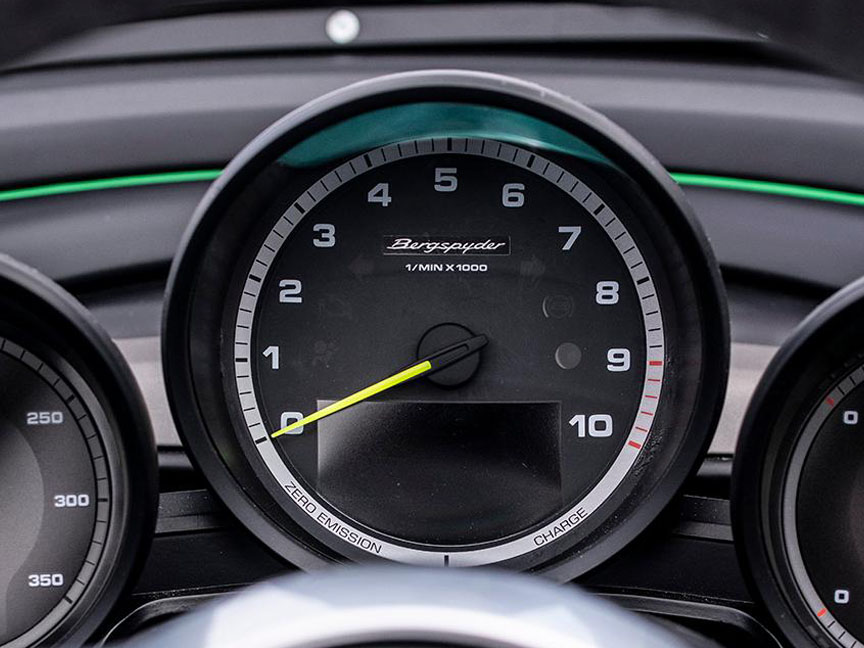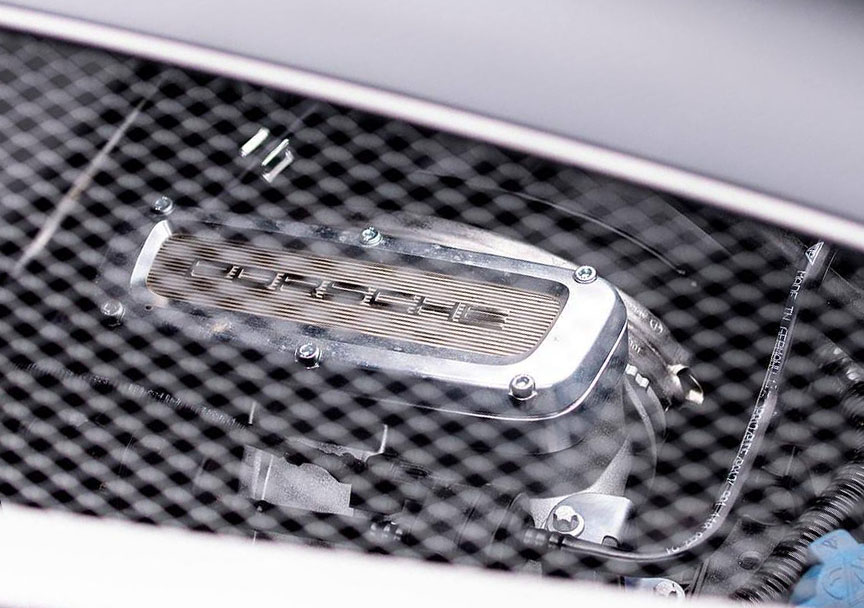Porsche 981 Bergspyder Concept (2015)
Date of unveil by Porsche AG: 2019 May 30
Premiere: 2019 May 30 at Gaisbergrennen, Austria
Porsche often builds concepts to push the limits of its vehicle types and see how far it can take something. The Porsche Boxster Bergspyder you see here uses the 981 Boxster as its base. The car was to be as lightweight and minimalist as possible. The team tasked with building this car immediately turned to the Porsche 909 for inspiration.
It started when in 2015, Porsche’s executive board ordered Weissach engineers to design and build the lightest sports car possible based on the 981. It was to be more minimalistic than the 981 Spyder. Some of the inspiration came from the 1968 Porsche 909 Bergspyder, although 909 was a complete space-age machine with no magnetic metals used and there was no chance to get power-to-weight ratio anywhere near the brainchild of Ferdinand Piëch. The 981 Bergspyder became 16% lighter than the 981 Spyder and got a special 3.8-litre engine with 289 kW, but the 909 Bergspyder with 2-litre engine would still have a 100% or 2 times better power-to-weight ratio, because it was a purpose-built hill climb racer.
The 981 Bergspyder received the 3.8-liter Cayman GT4 engine, which was tuned to produce 387hp (up 7hp). Porsche’s estimates were a 0-60mph time of 4.0-seconds and a Nürburgring time of around 7:30 minutes.
For those who don’t know the legendary Porsche 909 was the lightest Porsche ever made, weighing in a barely believable 384 kg/847 lb. With that as their guide, the team built the Boxster Bergspyder as a one-seater, roofless, door handless car designed to be as lightweight and extreme as possible. The car gets a short wind deflector for the driver. Where the passenger would usually go, there’s nothing there, just more bodywork.
The cabin of the car features many elements from the 918 Spyder. The car’s bucket seat was taken from the 918 as well. It’s a very minimalist cabin, but then, in a car like this, you don’t need much. This vehicle is built for high-speed laps and feeling the wind whip around you.
The 981 Bergspyder study did not pass the feasibility test and remained a one-off, a delight and eye-candy for Porsche fans. The car was shown to the public for the first time in 2019 at the classic Gaisberg hill climb event in Austria.
Basic Specs
- Engine: 3.8 Liter Flat Six
- Power: 289 kW / 387 bhp
- Gearbox: 6-speed manual
- Weight: 1099 kg / 2423 lb
- 0 – 60 mph: ~4.0 seconds
Pictures & Details































